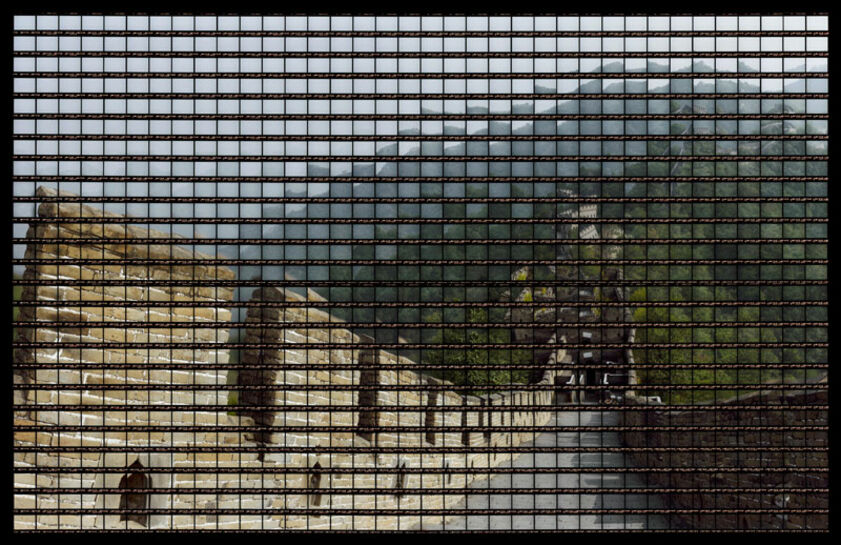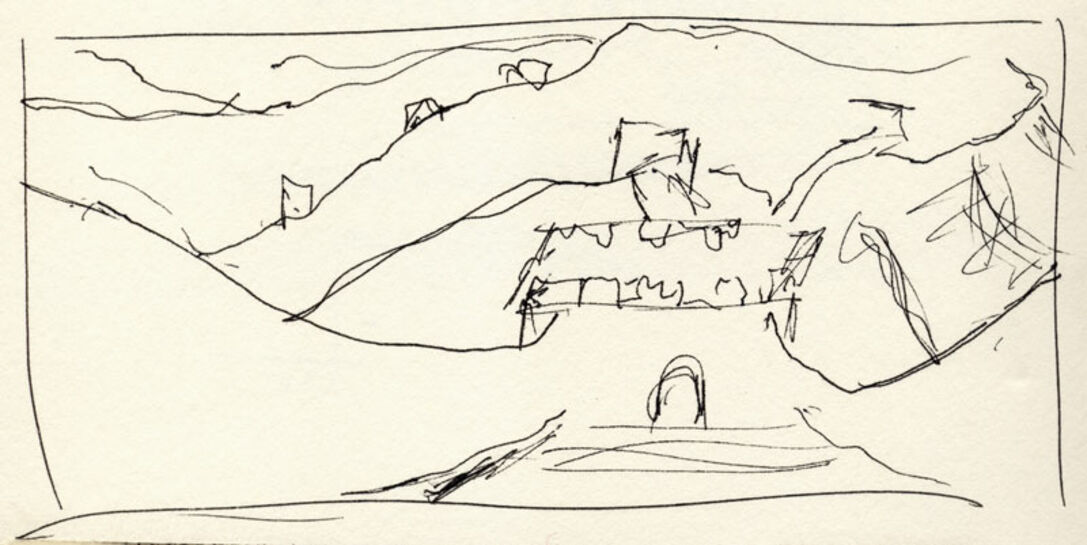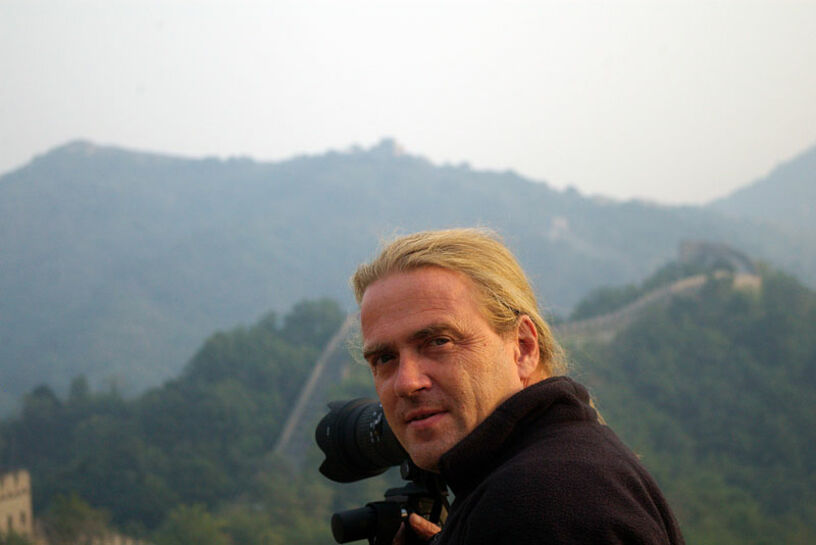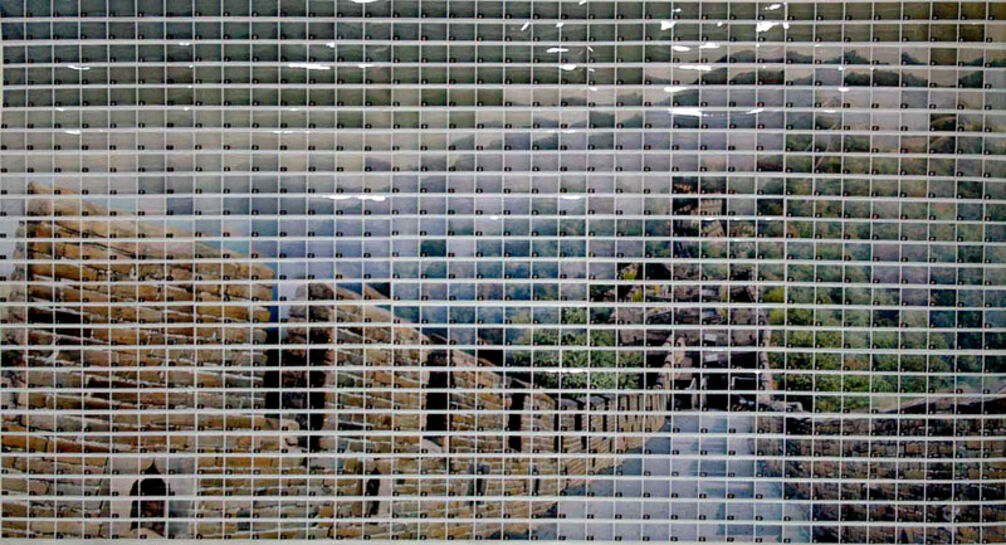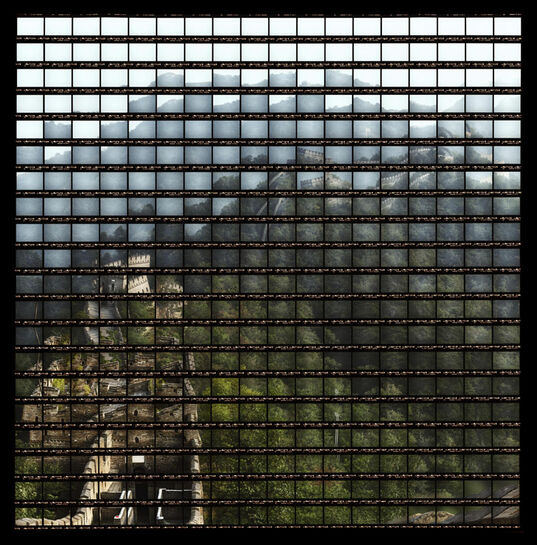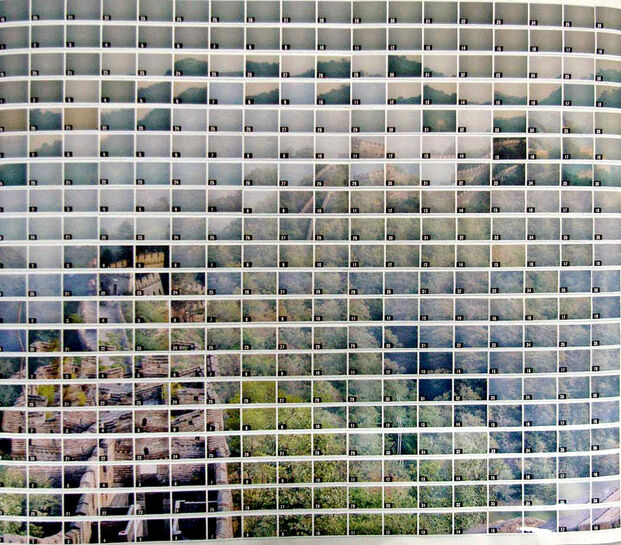Mutianyu
Mutianyu is a section of the Great Wall of China located in Huairou County 70km northeast of Beijing. As one of the best-preserved parts of the Great Wall, Mutianyu section of Great Wall used to serve as the northern barrier defending the capital and the imperial tombs. First built in the mid-6th century during the Northern Qi, Mutianyu Great Wall is older than the Badaling section of the Great Wall. Built mainly with granite, the wall is 7-8 meters high and the top is 4-5 meters wide. This Section is the only one with 22 Watchtowers on this 2,250- metre-long stretch, which are open for public. Besides, this section of Great Wall is surrounded by woodland and streams.
"My large-scale images combine photography, collage, and moving pictures.”
"Each photographic work since 1997 is methodically made up of horizontally placed film strips of up to 1,269 individual pictures. Every single one of these smaller images was taken with the camera from a slightly shifted perspective and subsequently combined into an overall picture, creating an entirely new image. As an artistic photomontage — originally fused as a group of film strips, then as an exposed contact print, presently prepared digitally — each large-scale color photograph reveals its creative process upon closer inspection.”
"To approach something like The Great Wall of China is much more complicated than it looks. Once you reach one of the accessible parts of The Wall, you have to walk, climb, and tumble up and down the path on top of the Wall and the many stairs that have been polished by the feet of thousands and thousands of soldiers, and later by millions of tourists. You have to get away from the mass tourism to find a place of silence. In the way that I work, it is not possible to photograph more than just a little piece out of the thousands of miles of this wall. It takes hours to expose 25 roles of 36-exposure film, or 900 shots, to be finished before the sunset, smog and fog enter the frame. In this image, I started with sunshine in the bottom of the image and ended with less sun towards the top."
—Thomas Kellner, January 14th, 2009
